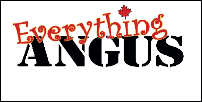 Can We Survive the Purebred Business? Can We Survive the Purebred Business?
I came across an article in an old "Canadian Cattlemen" magazine from 1955 while waiting at my chiropractor's office the other day (no, his magazines aren't all that old!). In it was a report from the 1955 Calgary Bull Sale listing the highlights and sale averages of that year's sales.
While it was interesting to note that "The junior and grand championship was won by T.G. Hamilton of Innisfail" in the Shorthorn Show, it also started me wondering how today's prices for bulls sold compared with in years past when input costs and living expenses were figured in. (Incidently, the top price paid to that date for any breed of bull occurred in 1955 when Rothney Golden Rod, a Shorthorn exhibited by A. R. Sandy Cross, was bought by Claude Gallinger of Edmonton for $10,000, an unheard of price at the time.)
I was born in 1955 so I don't profess to know anything about how sales were conducted back then, but as I understand from those that were around at the time you took your bull to town, dressed him up, showed him and sold him. The buyer paid and took the bull home. Done deal.
Recently many breeders have been doing basically the same thing but with the addition of several costly features. Some offer delivery. Many take the bulls home and feed them until the buyer requires their services. Others offer financing. Some offer it all. The purebred business is really one of the only businesses left that today offers MORE customer service than in years past.
The cost of taking pictures, producing a catalogue, postage and sale help (when you can find it) has all gone up as well. The added buyer convenience of internet bidding has also gained many converts. The list goes on and on.
But just how much can we afford to pay and still be viable? With rising costs everywhere, how much income can a cow be expected to generate? Her production has to buy land, finance new equipment, put a roof over her head and ours, pay down our debt, educate our children and feed us all.
Following is a chart of cost comparisons from 1955 to 2007 with the percentage of increase in cost/revenue. The source of the figures used is named with each amount, but I make no claims to accuracy - all items were found on the internet. Statistics Canada has reems of information that was totally unreadable to me and they seem to lump farm income and costs as a total per province rather than an average per operation, so comparable figures from the U.S. were used in several instances.
This just gives a rough idea but the general conclusion is obvious. I don't think it matters what sale you use, consignment or production sale, the costs against it are similar. While at Calgary the average price of Angus bulls rose 690% from 1955 to 2007 (with fed steers at just a 524% increase), the average cost of everything else compared was substantially MORE. And while most Canadian farm kids don't go to Harvard, it was the only university I could find that had tuition fees from the 1950's era posted.
So what is the answer? How can we continue to exist with all these rising costs and still make a decent living? No wonder so many producers work off farm as well. Do you really want to continue working as many hours as you do for an average income of $35,314 a year? (In 2007, Statistics Canada deemed $21,666 the 'poverty line' for a single person living in a major city.)
In the purebred business some breeders have experimented with video sales and report favorable results. But while the cost of sale help is cut down if you don't run animals through the ring, the video itself still has a price tag.
As more and more people become world wide web familiar and high speed internet reaches more areas, it may be that in the future you will sell your bulls without leaving the farm. Or it could be that the "100 mile limit" used to encourage local food purchases will become standard for genetic purchases as well, and old practices from days gone by become the new norm.
Farmers in general are an inventive group and those of us in the Angus business are no exception. These next few years could be a true test of that talent.
- Jan
|




